Navigating the Future of AEC with BIM Expertise
In the ever-evolving world of Architecture, Engineering, and Construction (AEC), the current dilemma is whether to stick to the traditional building blocks or embrace the transformative wonders of Building Information Modeling.
It is debatable that the traditional methods pave the way for the creative juices to flow however, doesn’t the plethora of tasks right from the preliminary stages overwhelm us resulting in a creative block?
“BIM is not just a 3D model. It’s a four-dimensional model – time being the fourth dimension. It’s a virtual construction process before you build.” – Chuck Eastman
Let’s understand the distinctions between a regular AEC professional and a BIM expert to see how stepping out of your comfort zone into the world of BIM can elevate your career to new heights.
Read more here, https://blog.bimgrafx.com/aec-in-transition-traditional-v-s-bim-professionals.
1. Approach to Design and Documentation
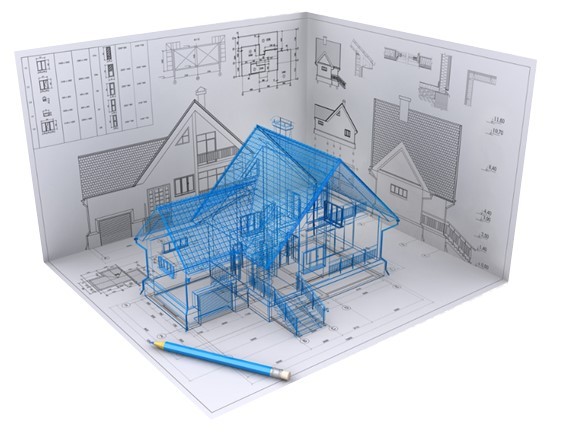
Regular AEC Professional: Relies on traditional sketches and 2D blueprints. They envision structures on paper but may struggle to convey the full depth of their ideas.
BIM AEC Professional: Utilises a 3D digital model with intelligent and parametric information for comprehensive design, analysis, and documentation. Armed with a digital palette that transcends imagination into a virtual marvel. According to a study by Autodesk, it has been observed that BIM adoption in design has soared globally, and 40-60% of firms across all sectors are using BIM on more than half of their projects. Imagine crafting 3D wonders, visualising every detail before breaking ground. That’s the power BIM brings to the design table, creating a dynamic, immersive experience that sets you apart in a competitive market.
2. Collaboration and Communication
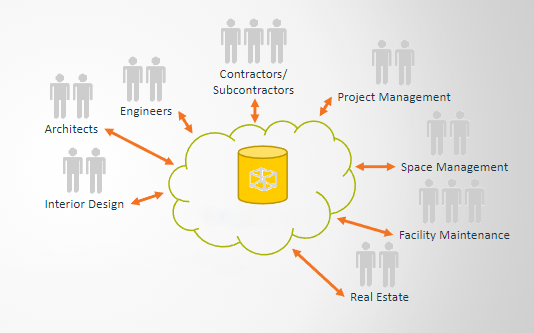
Regular AEC Professional: Collaboration involves the exchange of 2D drawings, potentially leading to communication gaps and errors.
BIM AEC Professional: Leverages 3D models for real-time collaboration, allowing multiple stakeholders to work concurrently, ensuring consistency across disciplines.
3. Visualisation and Simulation
Regular AEC Professional: Limited to 2D drawings and physical models for visualisation and simulation.
BIM AEC Professional: Employs advanced visualisation and simulation within a 3D digital model, enabling in-depth analysis of aspects such as energy performance, clash detection, and construction sequencing.
4. Data-Driven Decision-Making
Regular AEC Professionally: Decisions based on 2D drawings and personal experience.
BIM AEC Professional: Employ advanced visualisation and simulation within a 3D digital model, enabling in-depth analysis of energy performance, clash detection, and construction sequencing.
5. Cost Estimation and Analysis
Regular AEC Professional: Utilises traditional methods, often relying on manual take-offs for cost estimation.
BIM AEC Professional: Enhances accuracy through the linkage of cost data to model elements, allowing for automated updates and real-time cost analysis.
6. Construction and Facility Management
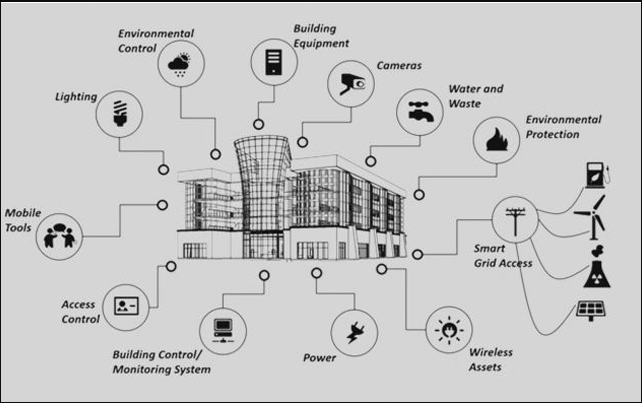
Regular AEC Professional: Depends on static construction documentation and as-built drawings for facility management.
BIM AEC Professional: Maintains a dynamic digital model for seamless transition through the entire building lifecycle, facilitating construction, maintenance, and renovations. Reduction in clashes and conflicts during construction with the implementation of BIM has been experienced and according to Autodesk’s survey, 87% of BIM-enabled firms are reporting mid-to-high levels of improvements in business growth. BIM ensures a synchronised, well-coordinated construction process. It’s like having a virtual conductor guiding every team member, minimising errors, and ensuring a harmonious symphony of construction activity AEC in Transition: Traditional v/s BIM Professionals.
7. Regulatory Compliance
Regular AEC Professional: Manual compliance checks against regulations and codes.
BIM AEC Professional: Automates compliance checks by embedding relevant information in the 3D model, ensuring adherence to regulatory standards.
8. Building Lifecycle Management
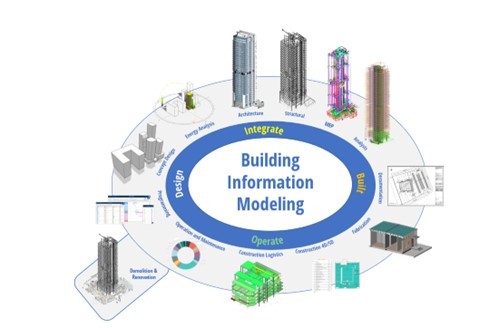
Regular AEC Professional: often faces the post-construction challenge of navigating a maintenance maze.
BIM AEC Professional: Studies show that BIM can lead to a 7% reduction in maintenance costs and a 5% improvement in energy efficiency.
BIM isn’t just about constructing buildings; it’s about creating organised, efficient systems that extend throughout the building’s lifecycle. It’s your secret weapon for sustainable, cost-effective facility management.
9. Payscale
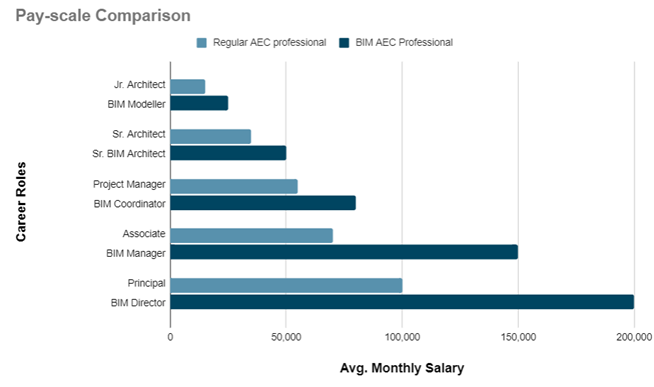
A BIM expert commands an annual salary of over ₹3,00,000, outshining junior architects or engineers. As one ascends to senior BIM engineering or coordination roles, salaries rise substantially, with BIM managers reaching ₹900,000 after 5-7 years of experience. This substantial earning potential positions BIM professionals as sought-after contributors in the AEC industry.
Though rooted in familiarity, the traditional methods are surpassed by the advantages of BIM. Opting for BIM is an integrated solution, seamlessly encompassing the entire process from design to execution and as-built drawings, redefining the paradigm of architectural and engineering practices.

According to a survey by Deloitte, amongst 16 different Construction Technologies, the most common is BIM followed closely by Cloud Management Software.
bimgrafX Academy
Unlock your BIM potential at bimgrafX Academy – the gateway to excellence. As an authorised Autodesk BIM training partner, we actively engage in BIM implementation and awareness programs across India. With a mission to meet global demand, we’ve trained over 90k students and conducted 250 batches. Join our transformative journey, empowering AEC and Interior Design professionals for success in the expanding BIM industry. AEC in Transition: Traditional v/s BIM Professionals
Testimonials
In the construction industry’s evolution, the future favours BIM AEC Professionals, marking a shift towards digital innovation. The value they bring, surpassing that of regular AEC professionals, is evident in their adeptness at using BIM for a more efficient and collaborative approach.
However, the choice is yours – to remain a regular AEC professional or embrace the future as a BIM AEC professional.
With BIM, the possibilities are limitless, and bimgrafX Academy is here to guide you every step of the way. Let’s Tango with Technology!
